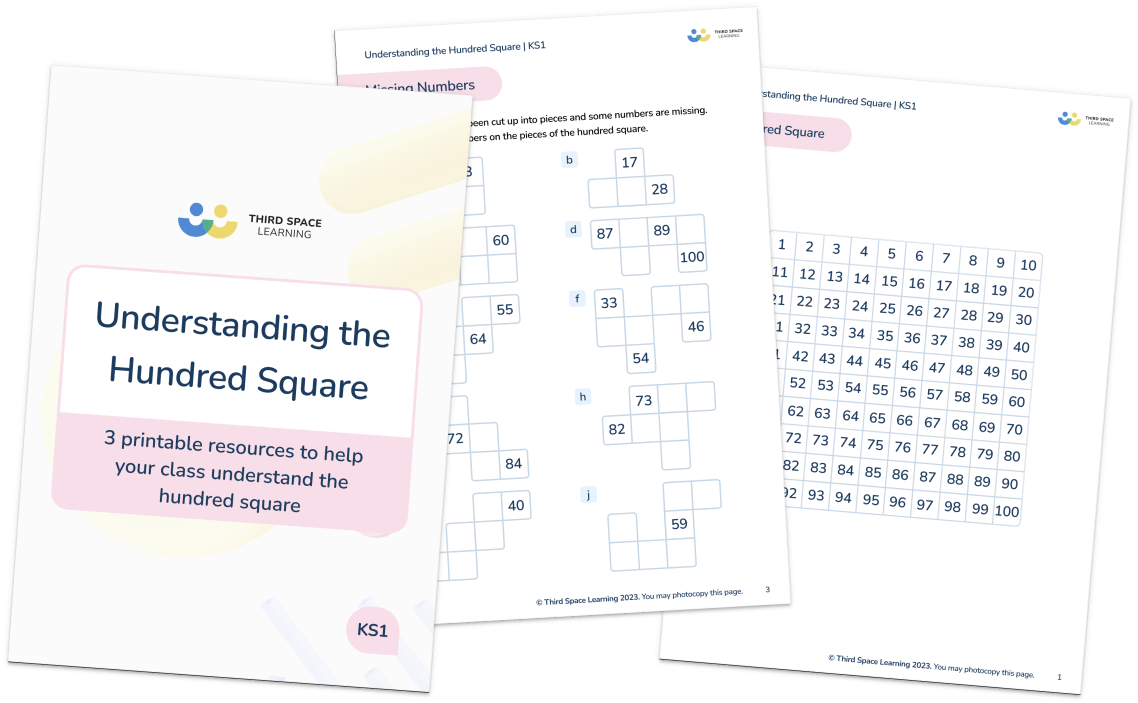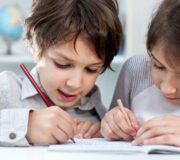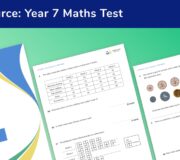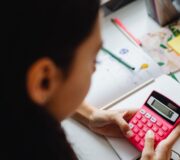What Is A Number Square? Explained For Primary School Teachers, Parents & Pupils
Number squares are a staple of the primary mathematics classroom. They are one of the most long-standing resources to have been used in maths because they are both inexpensive and versatile. They can be used across the ‘number’ part of the primary curriculum from EYFS to Year 6.
This article will explore what a number square is and give some ideas for how it can be used by primary teachers to enhance their maths lessons.
What is a number square?
A number square is simply a square filled with numbers that can be used as a counting aid. Most commonly, you will find a number square as a 10×10 square with the numbers 1-100 in sequential order (sometimes known as a hundred square).
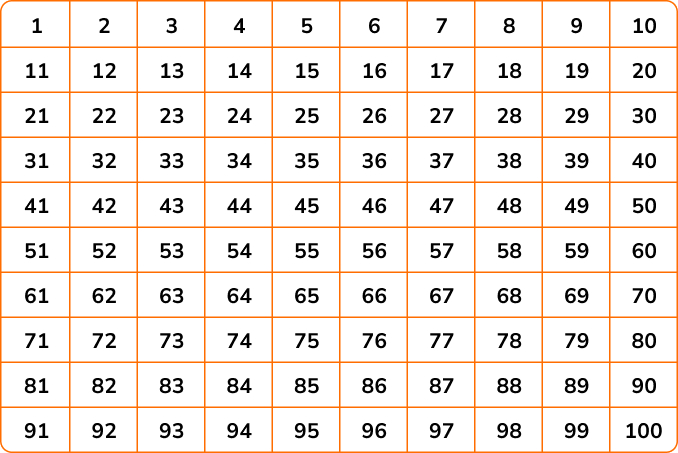
However, earlier in their school career, particularly in EYFS and early in Year 1, children are likely to use one that only has the numbers 1-20 as these are the numbers that they work with in maths at this age.
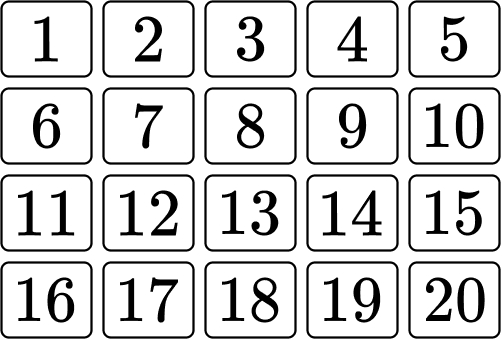
Why are number squares useful?
Number squares are a visual aid that helps children to count both forwards and backwards in ones but also in tens and other multiples. In this respect, they are similar to number lines but can have many more numbers represented which can help children to build an understanding of number sequencing beyond 20 to 100.
Additionally, they allow the youngest children to see and recognise the numerals regularly. This will allow them to copy them too to ensure that their formation is correct.
They are also versatile in that they can be used for a number of different topics across all of the primary year groups meaning that the children become familiar with their usage and confident to use them as a tool to aid their own learning and understanding.
Another benefit for teachers is that there are many printable number square worksheets online so they are both time and cost effective in a profession that is always busy.
Understanding the Hundred & Number Square
3 printable resources to help your class understand number squares and numbers from 1 to 100. Includes complete, blank and missing number square problems.
Download Free Now!How to use number squares in the classroom
1. Number squares for place value
Number squares can be used for place value in EYFS and KS1. They support the understanding of numerals and how they are formed. They also allow children to begin learning to count both forwards and backwards in this way, they support the children’s learning in a similar way to a number line.
A common place value activity using a number square is finding missing numbers and explaining their reasoning. You may begin with this activity by covering a number on the square:
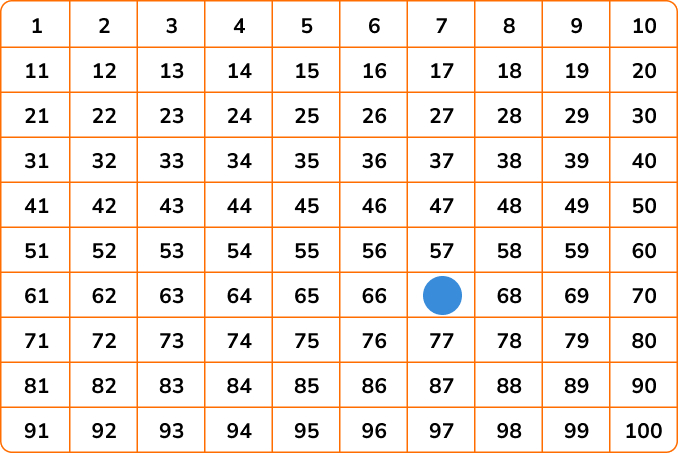
You can then ask the children what the missing number is and how they know, encouraging vocabulary relevant to your year group such as one greater than/less than.
Another way to do this activity is to give the children part of a number square and ask them to fill it in, explaining how they know. In this activity, you could differentiate by having as many empty squares as you desire:
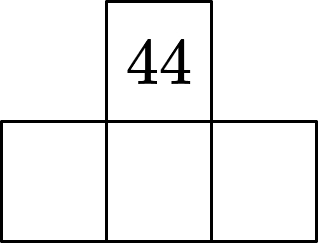
Looking for more ideas to help your teaching of place value? Read our blog on Dienes blocks to learn more about these versatile manipulatives.
2. Number squares for addition and subtraction
Number squares are useful for addition and subtraction within both 20 and 100 so again, cover the KS1 curriculum.
Initially children are likely to have to count each square individually using one-to-one correspondence to add or subtract, much like with other maths manipulative and visual resources.
However, when they become confident with the format of a 1-100 number square, they can begin to partition their number into tens and ones and move vertically to represent the number of tens. This will improve their efficiency in calculation:
65+32
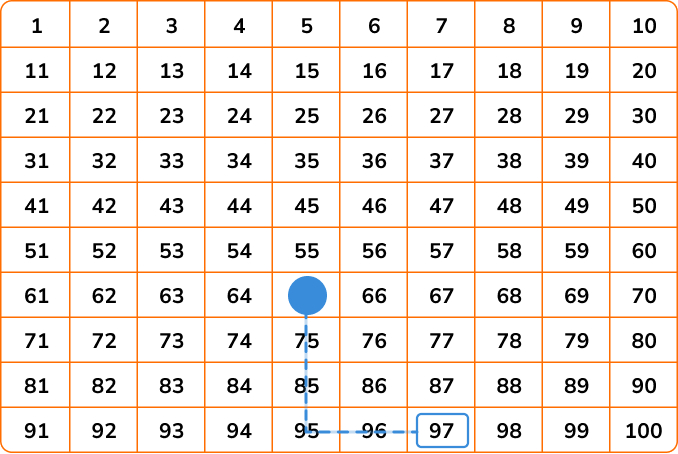
A fun activity for children to do using number squares and addition or subtraction is to play a game akin to snakes and ladders.
Since the board in this popular game is a hundred square, they can use this to practise their addition and subtraction. Either start at 1 (for addition) or 100 (for subtraction) and play as normal, rolling a dice to determine how many places each child moves in turn.
When children become more confident, you could add additional dice to create larger numbers or encourage them to work out where they will move mentally before counting the places.
3. Number squares for times tables
Using number squares alongside other concrete maths resources can help children to learn their times tables by encouraging them to find patterns in the multiples.
In Year 2, when children learn their 2, 5 and 10 times tables, they should be able to see regular patterns, for example that the two times table covers every even number (and that that is every other number on the square), or that every multiple of ten has a zero at the end.
In Years 3 & 4, when the remaining times tables are learnt, encourage children to talk about the number patterns (the digits of numbers in the nine times table add up to nine) rather than spatial patterns (the numbers are diagonal).
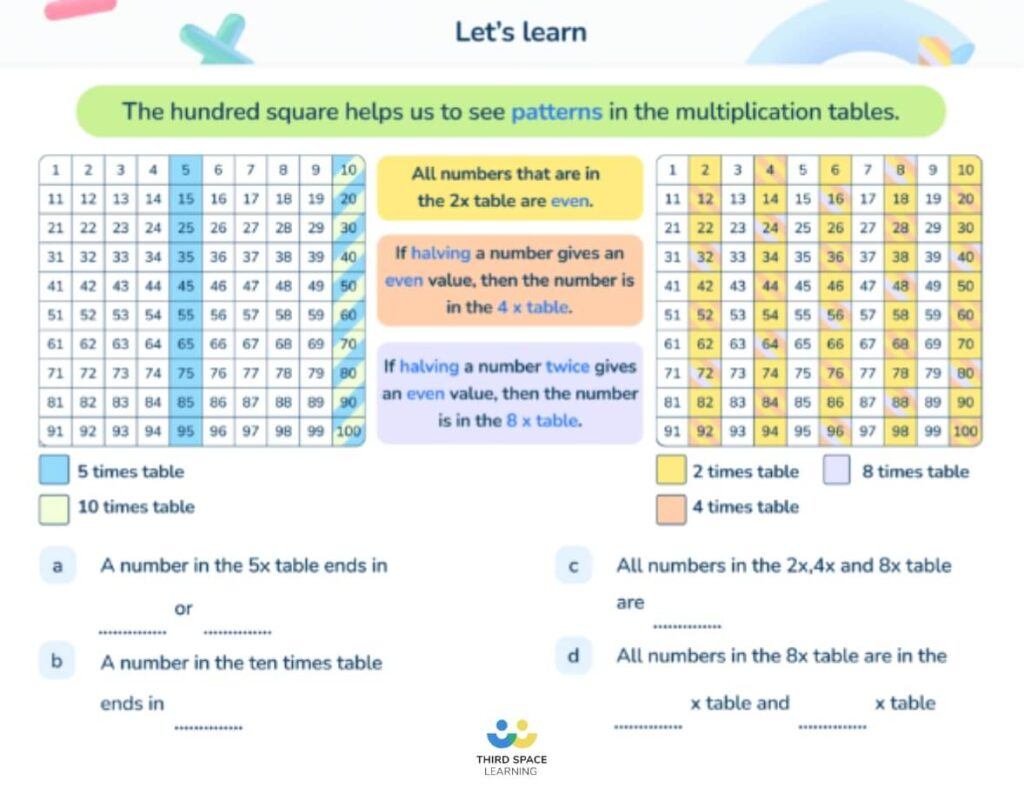
4. Number squares for fractions
When children begin learning tenths and hundredths in year 4, a number square can be a really useful tool to assist them. Initially, it may be more useful for children to have a blank 10×10 square rather than one with numbers:
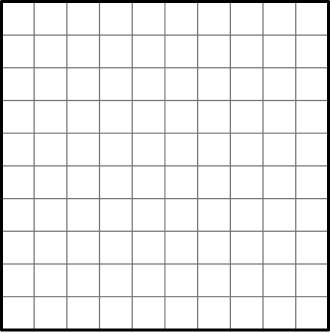
In this square, children can see that there are ten columns and ten rows. Therefore, it is easy to split them into tenths. In this example, three of the ten columns have been shaded, and therefore 3/10 have been shaded.
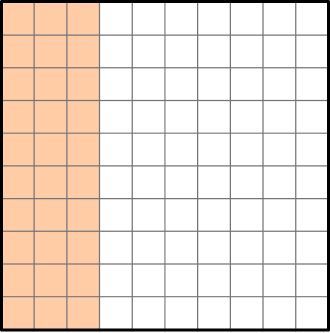
Although it is perfectly reasonable to use a bar model with just ten pieces to teach tenths at this point, showing children this representation alongside a model with ten equal parts will help later on when children need to learn the relationship between tenths and hundredths.
Similarly, hundredths can be shown using a bar model in the same way:
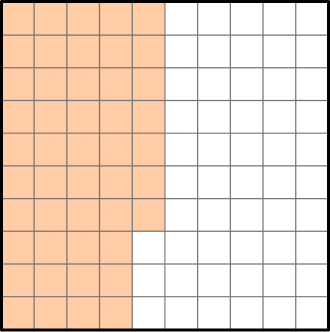
In the example above, children can see that there are 100 equal parts and that 47 of them have been shaded. Therefore, 47/100 have been shaded.
5. Number squares for decimals
Having used the above two representations leads on to being able to use number squares to support children’s understanding of decimal numbers too. Usually, teachers begin the exploration of decimals by relating them to fractions in tenths and hundredths. Taking the example above:
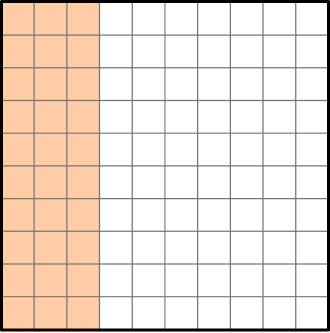
If the children can already express that this shows 3/10 because three out of the ten columns are shaded, it is then easier for them to understand that this also shows 0.3 once they know that the first place after the decimal point is called the tenths column.
Hundredths can be trickier as decimals because children already know that we can only have digits 0-9 in each of the place value columns. This is when using a number square to represent tenths can be really useful.
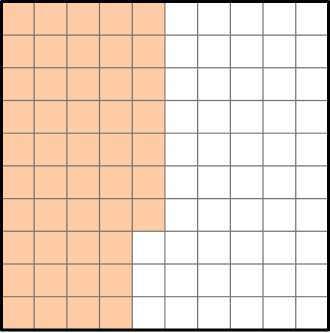
As discussed, children are likely to have already learnt that this number square is showing 47/100. However, we can also teach children that this shows 4/10 + 7/100. This then lends itself to the children being able to express the number as a decimal because they can see that the 4/10 is written in the tenths column and the 7/100 in the hundredths column. Therefore, expressed as a decimal, this is 0.47.
You can also find number squares with decimals written in instead of whole numbers which can help with addition and subtraction of decimals in the same ways highlighted earlier in the blog.
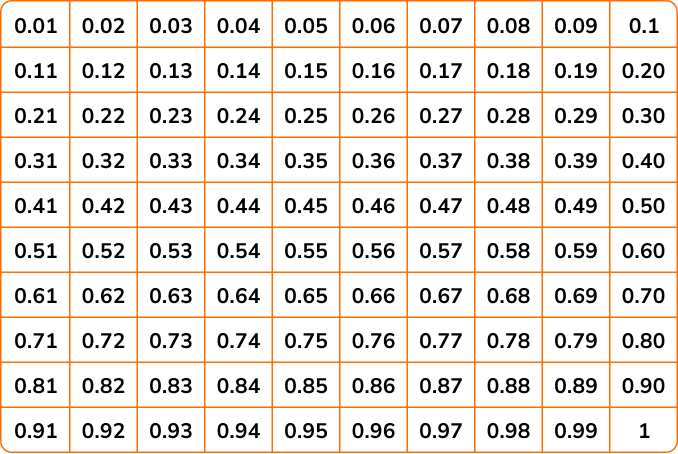
6. Number squares for percentages
Percent literally means in every hundred and therefore a hundred square is the perfect resource to help children to represent these.
If children have already used number squares to represent fractions and decimals in Year 4, it is likely to be a good idea to pull them out again in Year 5 to look at percentages. Again, a blank square is likely to be the most useful resource for this.
If we take the number square showing 3/10 (or 30/100) that we have used before again:
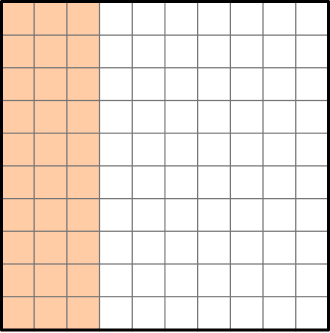
This time we are interested in how many parts of the hundred are shaded – 30. Therefore 30% is shaded. This helps children to visualise what 30% is and its equivalents in decimals and fractions.
If you were to laminate the blank squares and use a whiteboard pen to write on them, you could also use these to help you to calculate percentages of numbers by writing ten percent over a tenth of the square.
7. Number squares and prime numbers
A common activity to teach prime numbers in Year 5 is to shade in all the numbers of the two times table on a hundred square, then the three times table and so on. The numbers left unshaded are your prime numbers.
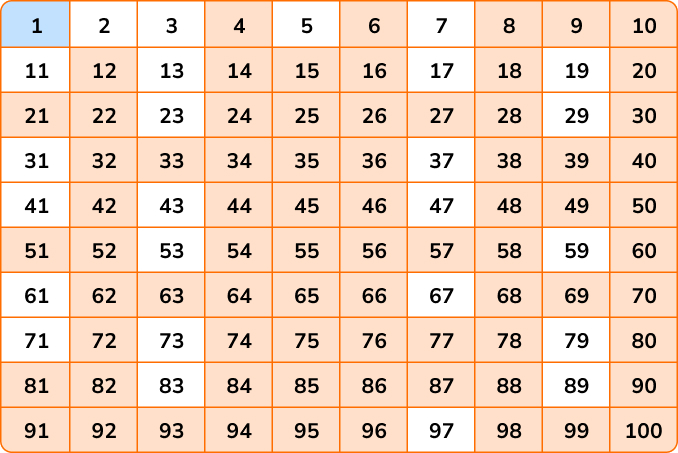
When do children use number squares in school?
As they are so versatile, number squares can be used in maths lessons throughout primary schools. As demonstrated above, there are specific activities that can be used with children from EYFS to Year 5, but even children in Year 6 could use them to support their calculation or to strengthen their proof when reasoning.
Number squares worked examples
Let’s explore some worked examples of how to use number squares in the classroom to teach different mathematical concepts.
- Fill in the missing numbers. Explain how you know.
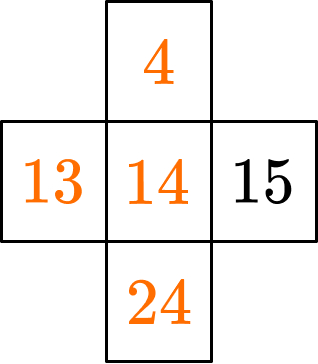
The child has filled in the missing numbers. Expect an answer similar to the following: ‘I knew the middle number was 14 because it is one less than 15. The number next to that should be one less again so it is 13. The number above 14 has to be 10 less than 14 so it is 4 and the number below 14 needs to be 10 more so it is 24.
- There are 78 pieces of fruit in year 2, 43 get eaten. How many are left?
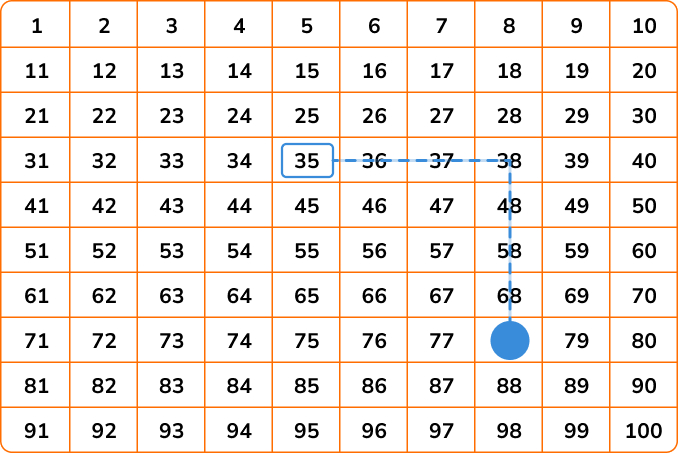
The child has worked out from the word problem that the question is 78-43. They have first subtracted 40 by moving 4 places upwards. Then they have subtracted 3 by moving three places to the left, resulting in them finding the answer 43.
- Express how much is shaded as a fraction, decimal and percentage.
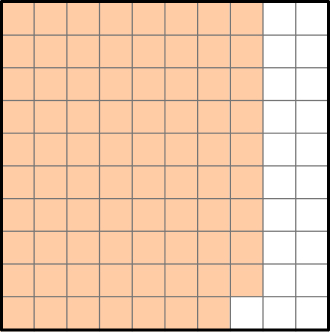
Since there are 79 parts of 100 shaded, the fraction is 79/100. This then allows us to convert it to the decimal 0.79 and the percentage 79%.
Number squares practice questions
Here are some ideas to help you integrate number squares practise questions into your classroom teaching.
- Fill in the missing numbers
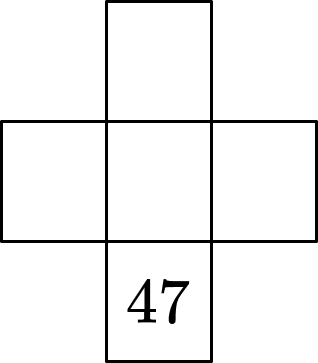
Answer: Top: 27
Middle (L-R): 36, 37, 38
- I buy a ball at the shop which costs 73p and a pencil which costs 18p. How much do I spend altogether?
Answer: 91p
- Colour all of the multiples of five on the number square. Do you notice any patterns?
Answer: Every number in the five times table has a 5 or 0 at the end. They also make two vertical lines on the number square.
- What fraction of the number square is shaded? What fraction of the number square is unshaded. How do you know?
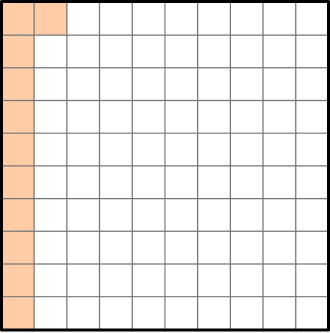
Answer: 11/100 of the number square is shaded. This is because 11 parts are shaded out of 100 parts in total.
89/100 are unshaded. I know this because 1 whole (100/100) – 11/100 = 89/100.
- Represent 0.67 on the number square.
Answer: 67 parts of the number square should be shaded. It doesn’t much matter which ones are shaded.
Looking for more information on maths manipulatives for the primary classroom?
A number square is a square filled with numbers that can be used as a counting aid.
There are a number of ways that you can use a hundred square but they generally involve counting either in ones or tens.
DO YOU HAVE STUDENTS WHO NEED MORE SUPPORT IN MATHS?
Every week Third Space Learning’s specialist online maths tutors support thousands of students across hundreds of schools with weekly online 1 to 1 maths lessons designed to plug gaps and boost progress.
Since 2013 these personalised one to one lessons have helped over 150,000 primary and secondary students become more confident, able mathematicians.
Learn how the programmes are aligned to maths mastery teaching or request a personalised quote for your school to speak to us about your school’s needs and how we can help.

